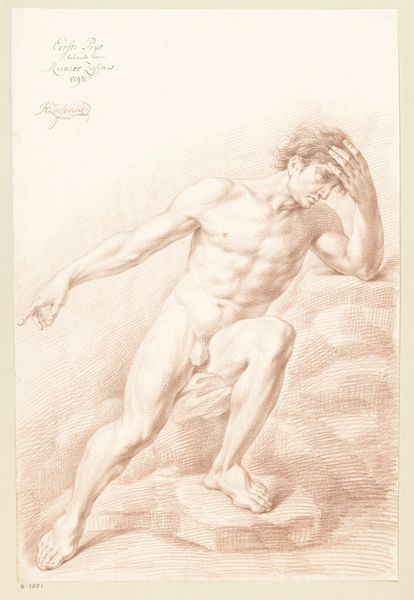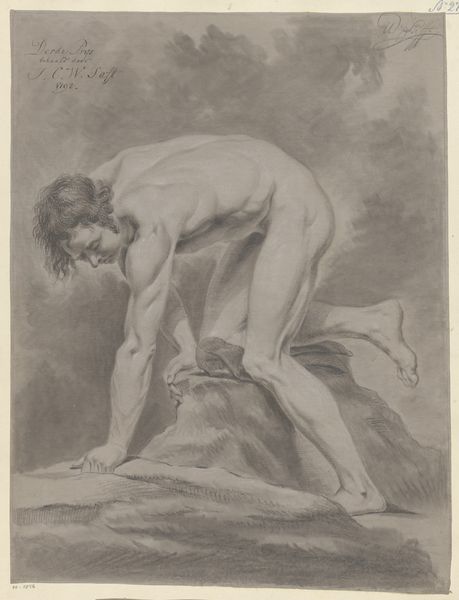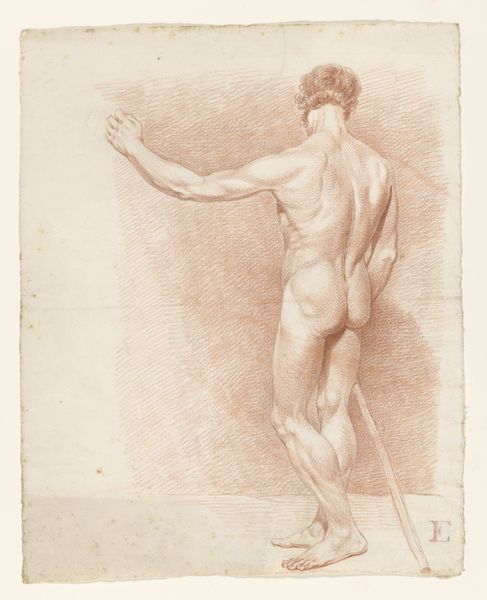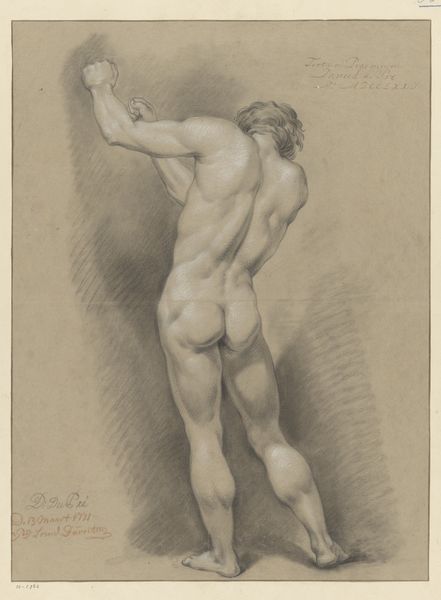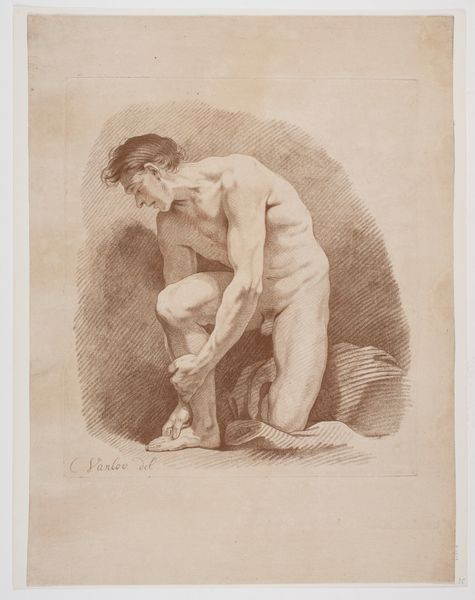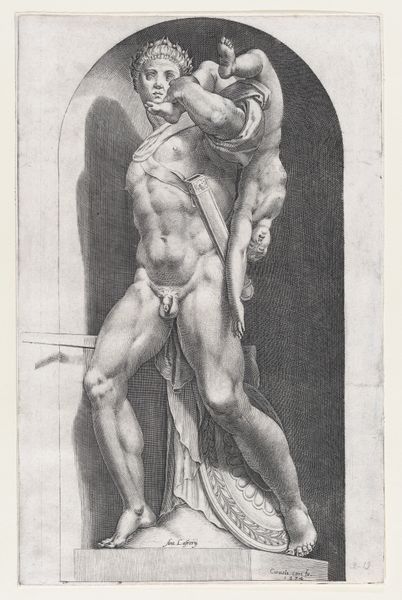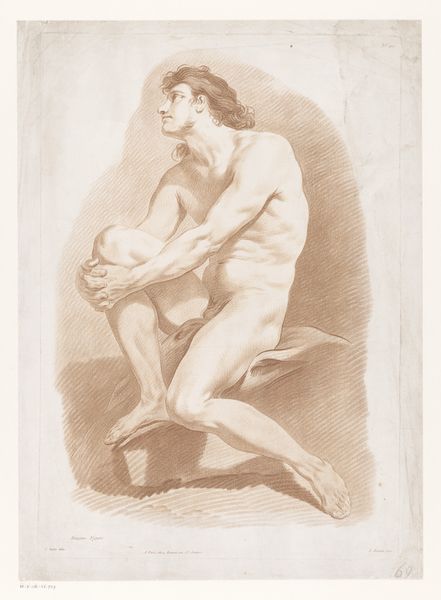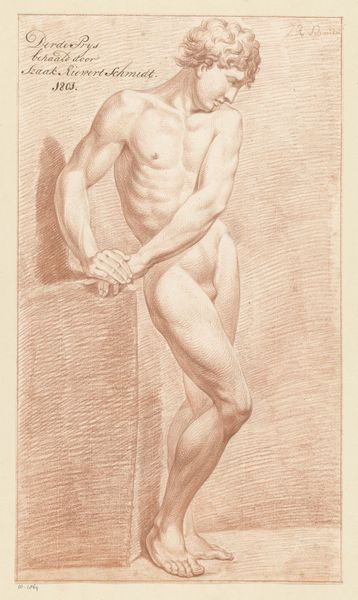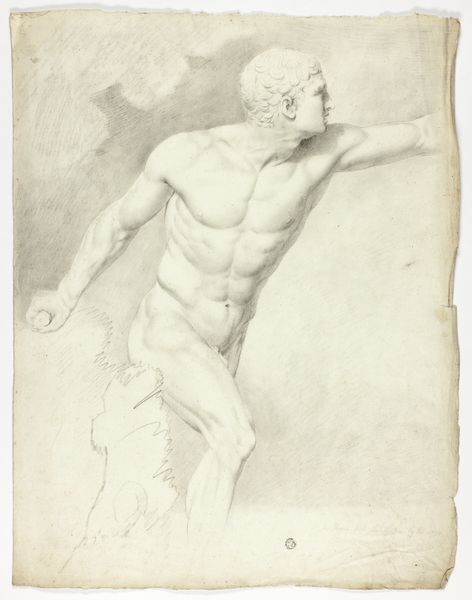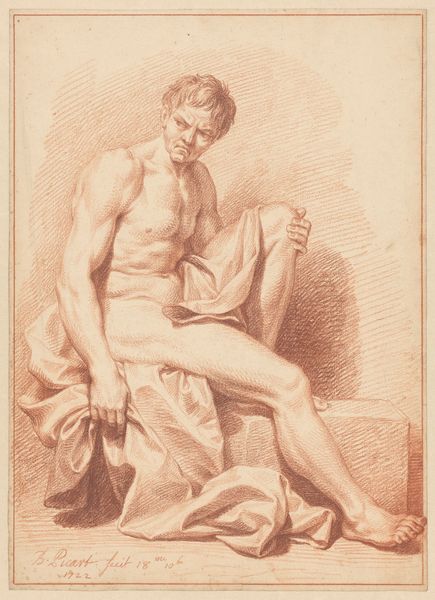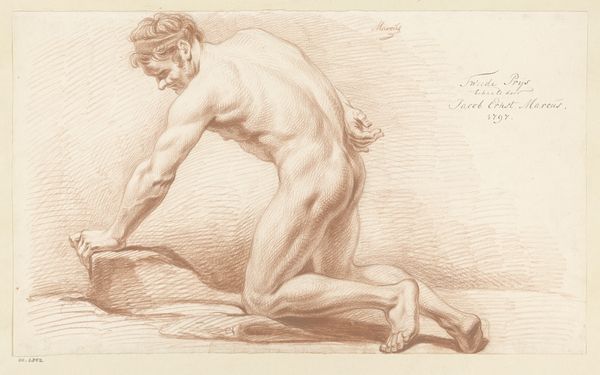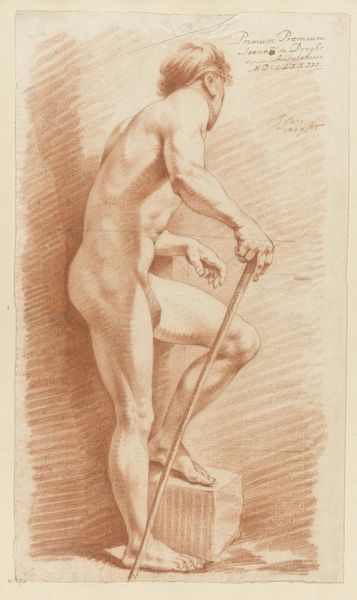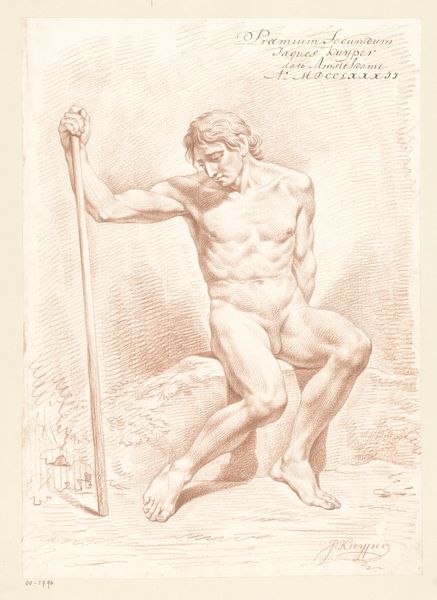
Dimensions: height 537 mm, width 371 mm
Copyright: Rijks Museum: Open Domain
Curator: Looking at this drawing, I'm struck by the palpable tension in the rower's body. It's a moment of exertion, frozen in time. Editor: Indeed. This piece is titled "Naakte roeiende man, op de rug gezien" which translates to "Naked Rowing Man, seen from the back." It's attributed to Louis Marin Bonnet, and its creation dates somewhere between 1746 and 1793. It's currently housed right here at the Rijksmuseum. Curator: The nudity is interesting, isn't it? It removes the figure from any specific context, elevating it to something more universal, more primal. What sort of man is this? Is he Charon ferrying souls across the river Styx? Editor: Or perhaps it's a study in form? Academic art from this period frequently used the nude figure to explore anatomy and idealized forms. It was about honing technique, understanding the human body as a foundation for larger history paintings. Curator: I can certainly see that. But look at the detail in the muscles, the curve of his spine – there's a weight of struggle there. It's not simply an anatomical study; it evokes something deeper. Rowing a boat could symbolize navigation of the self. Editor: And consider the cultural moment. Bonnet lived through a time of upheaval—the Enlightenment giving way to Revolution. This image could speak to the individual struggling against the current of larger historical forces, pushing against inevitable change. Or a literal rowing, in the rivers of Paris or elsewhere where revolutionary action unfolded. Curator: Absolutely. And the monochrome palette – sepia, almost – adds to the sense of timelessness, a distant past. This is more than just a study, more than just academic art. There is longing, toil, determination – human persistence. Editor: It's remarkable how a relatively simple drawing can contain such complexity, sparking our minds to reach across decades and infer a depth of experience. Curator: A cultural artifact with resonating symbols. A drawing that allows us to ponder broader narratives of time, power, labor, and the nude male form as representation and reality.
Comments
No comments
Be the first to comment and join the conversation on the ultimate creative platform.
